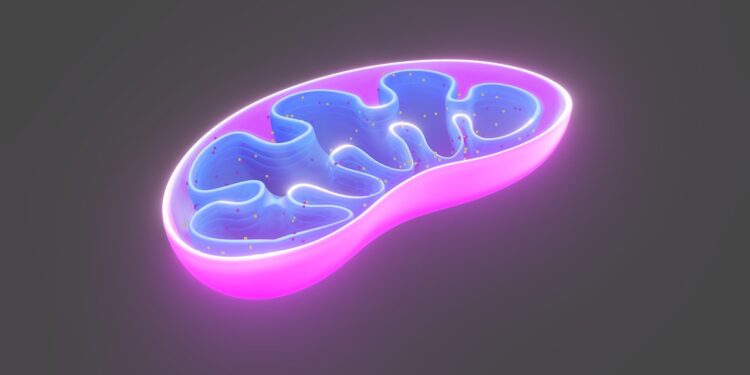Credit: Public Pixabay / CC0 domain
Fifty years since its discovery, scientists have finally determined how a molecular machine found in mitochondria allows us to make the fuel that we need from sugars, a vital process to all life on earth.
The scientists of the Medical Research Council (MRC) Mitochondrial biology unit, University of Cambridge, have developed the structure of this machine and shown how it works like the lock on a channel to transport the pyruvate – a molecule generated in the body from the rupture of sugars – in our mitochondria.
Known as the carrier of Pyruvate Mitochondrial, this molecular machine was proposed for the first time in 1971, but it has so far taken that scientists visualize its structure on a atomic scale using cryo-electron microscopy, a technique used to enlarge an image of an object at around 165,000 times its actual size. Details are published in Scientific advances.
Dr. Sotiria Tavoulari, a main research partner of the University of Cambridge, who first determined the composition of this molecular machine, said: “The sugars of our diet provide energy to our body. ATP cell fuel.”
Maximilian Sichrovsky, a doctorate. The student of Hughes Hall and the first spouse of the study, said: “Make a pyruvate in our mitochondria seems simple, but so far, we have not been able to understand the mechanism of the way this process occurs.
“Using advanced cryo-electron microscopy, we were able to show not only what this transporter looks like, but exactly how it works. It is an extremely important process, and understanding it could lead to new treatments for a range of different conditions.”
The mitochondria are surrounded by two membranes. The external one is porous and the pyruvate can easily pass, but the inner membrane is waterproof in pyruvate. To transport the pyruvate to the mitochondria, an external “door” of the carrier opens, allowing the Pyruvate to enter the carrier. This door then closes, and the interior door opens, allowing the molecule to pass in the mitochondria.
“It works like locks on a channel but on a molecular scale,” said Professor Edmund Kunji of the Mitochondrial MRC Biology Unit, and a scholarship holder at Trinity Hall, Cambridge. “There, a door opens at one end, allowing the boat to enter. It then closes and the door at the opposite end opens to allow the gentle transit boat.”
Because of its central role in controlling how mitochondria operates to produce energy, this support is now recognized as a target of promising drugs for a range of conditions, including diabetes, fatty liver disease, Parkinson’s disease, specific cancers and even hair loss.
Pyruvate is not the only energy source available. Body cells can also remove their energy from the fat stored in the body or amino acids in proteins. The blocking of the Pyruvate carrier would force the body to look for its fuel elsewhere – possibilities creating opportunities to deal with a certain number of diseases.
In fatty liver disease, for example, blocking access to the entrance to pyruvate into mitochondria could encourage the body to use potentially dangerous fats that have been stored in liver cells.
Likewise, there are certain tumor cells that are based on the metabolism of Pyruvate, as in certain types of prostate cancer. These cancers tend to be very “hungry”, producing excessive pyruvate transporters to ensure that they can eat more. The support of the support could then starve these cancer cells from the energy they need to survive, killing them.
Previous studies have also suggested that the inhibition of the mitochondrial paint holder can reverse hair loss. The activation of human follicle cells, which are responsible for hair growth, is based on metabolism and, in particular, the generation of lactate. When the wearer of the mitochondrial pyruvate is prevented from entering the mitochondria into these cells, it is rather converted into lactate.
Professor Kunji said: “The drugs inhibiting the support function can reshape the functioning of mitochondria, which can be beneficial under certain conditions. Electron microscopy allows us to visualize exactly how these drugs are linked inside the aircraft carrier to block it – a duration in the work, you might say.
“This creates new drug design opportunities based on the structure in order to develop better and more targeted drugs. It will be a real game changer.”
More information:
Maximilian Sichrovsky et al, molecular base of the transport of pyruvate and inhibition of the human mitochondrial paint, Scientific advances (2025). DOI: 10.1126 / SCIADV.ADW1489. www.science.org/doi/10.1126/sciadv.adw1489
Supplied by the University of Cambridge
Quote: Throwing a “ key to work ” of the machinery of our cells could help to fight against cancer, the disease of the fatty liver … and hair loss (2025, April 18) recovered on April 19, 2025 from
This document is subject to copyright. In addition to any fair program for private or research purposes, no part can be reproduced without written authorization. The content is provided only for information purposes.



